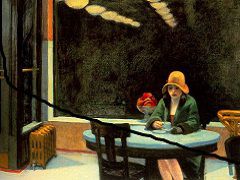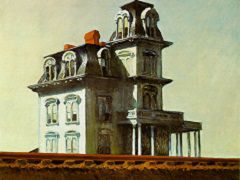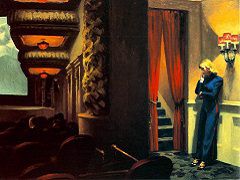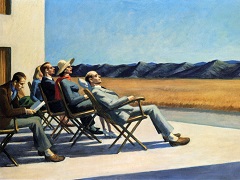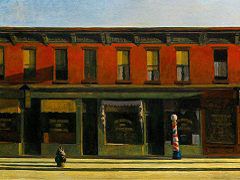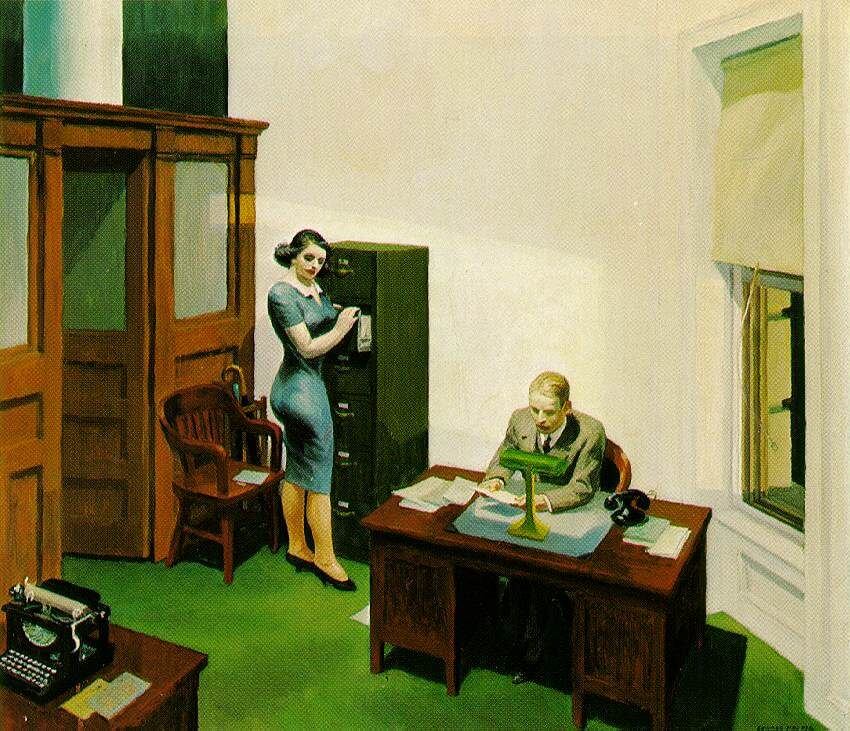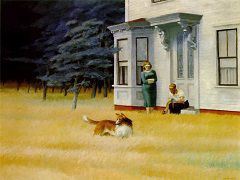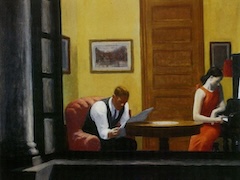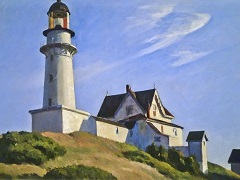Eleven A.M., 1926 by Edward Hopper
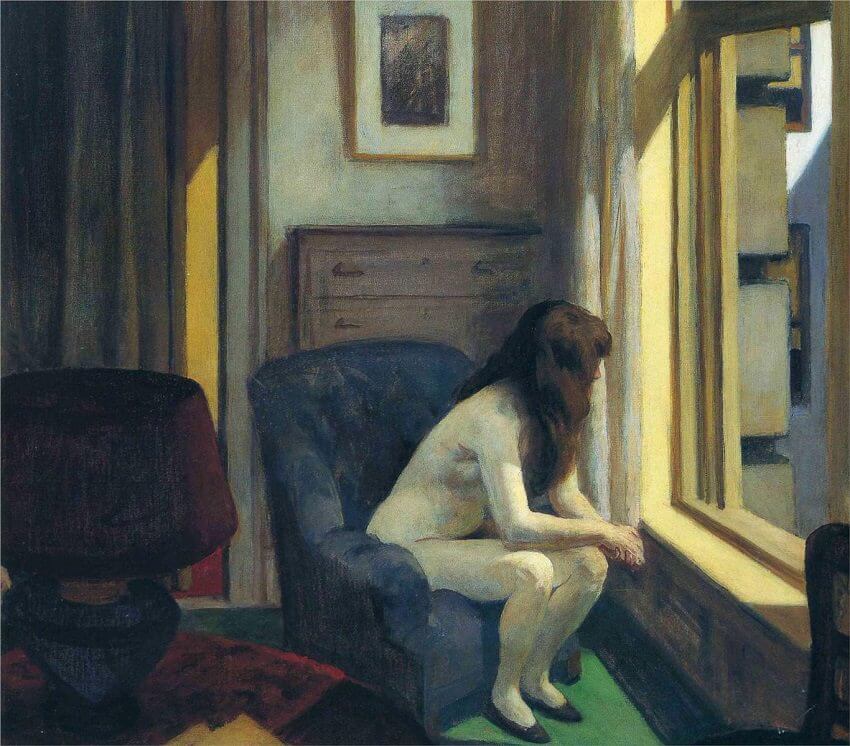
A woman, hands clasped together, sits in a blue armchair looking out of her apartment window. She is naked except for a pair of flats on her feet, and sits in profile. The viewer is, as always, denied any real access to the female figure's individuality: her hair falls over her face, allowing the viewer only a glimpse of her nose. Though the armchair is angled in the viewer's direction, the figure's body is angled away from the viewer and toward the window. The viewer gazes at the female's body without being confronted in return. There is a lamp atop a table in the painting's foreground, and a discarded coat is in the left background. A small framed painting hangs over a dresser behind the woman. Hopper's Eleven A.M. of 1926 continues to demonstrate his desire to relegate the female to his canvas.
Eleven A.M.'s female figure dominates the composition, in large part because the paleness of her skin contrasts so strongly with the other colors in the painting: the blue of her chair, the deep red of the lamp in the work's foreground, and the green of the curtains in the left background. She is also the work's compositional center, anchoring its tightly constructed space. Foreshortened, the painting draws the viewer into the woman's intimate space. Some art critics find that the same sense of containment and regulation of female sexuality appears in Eleven A.M. and suggests that Hopper curtails the threat of female sexuality by repeatedly locking his female nudes into their domestic interiors.


